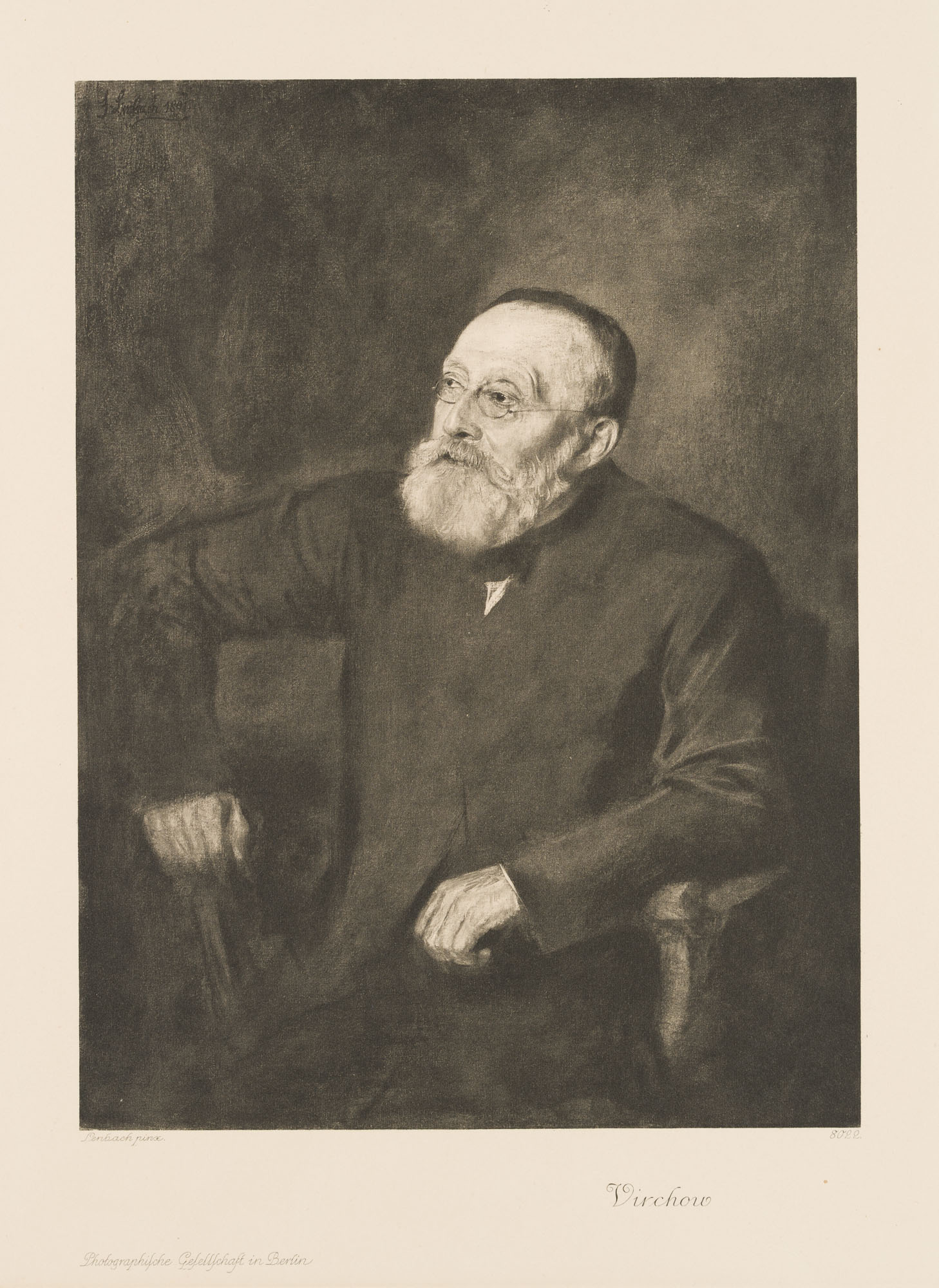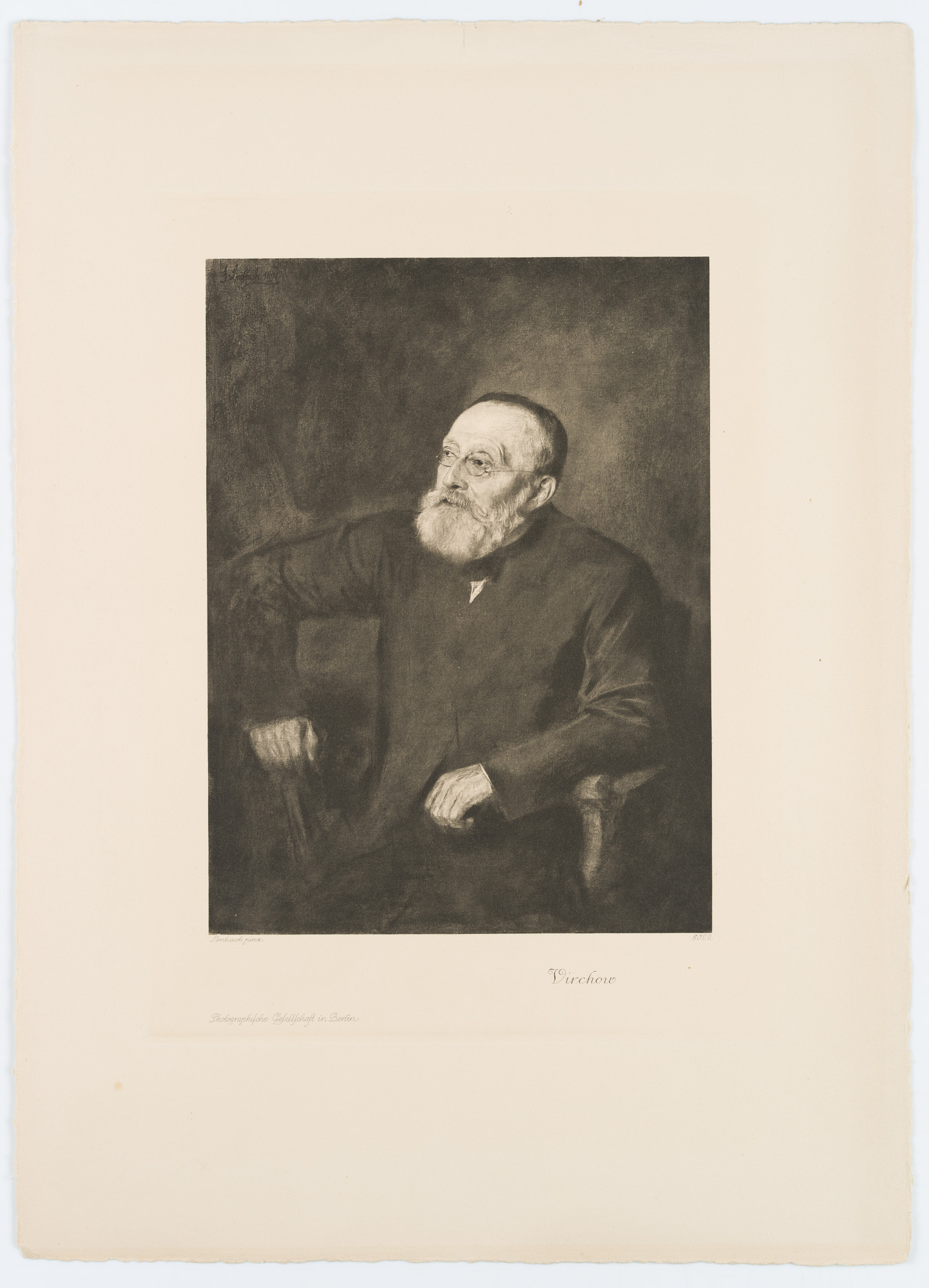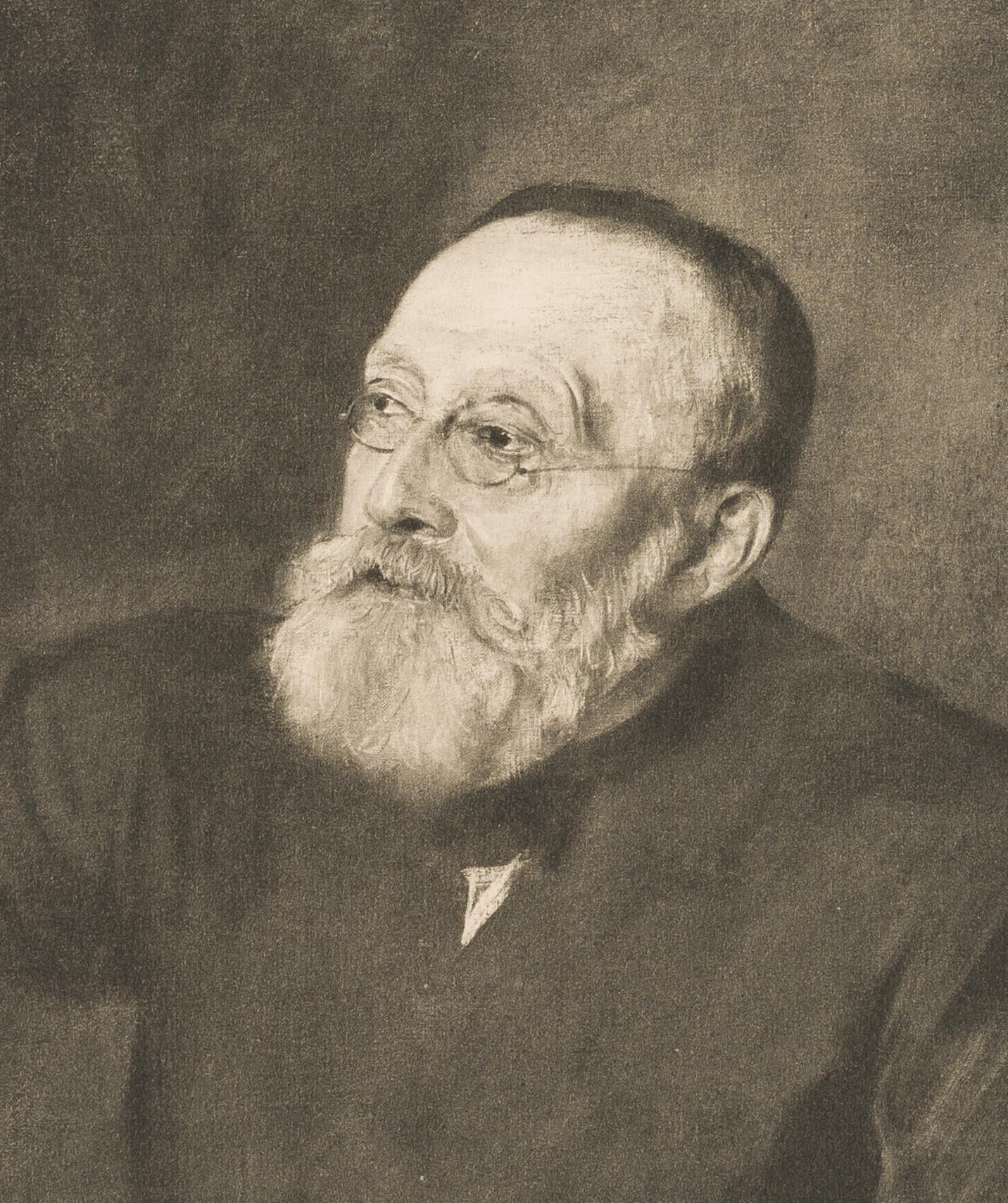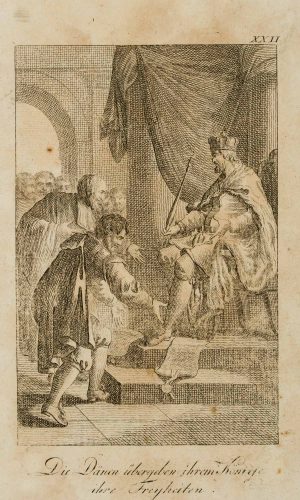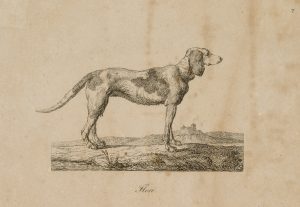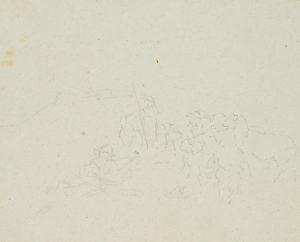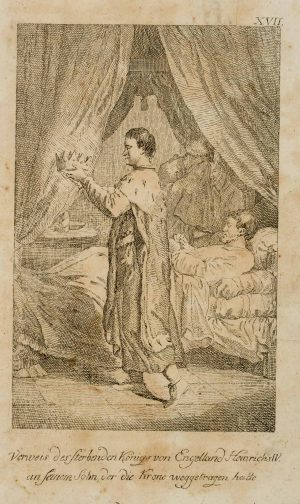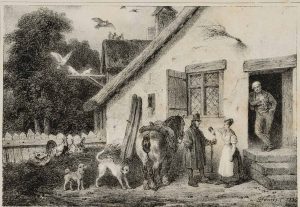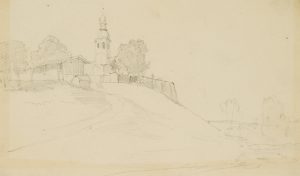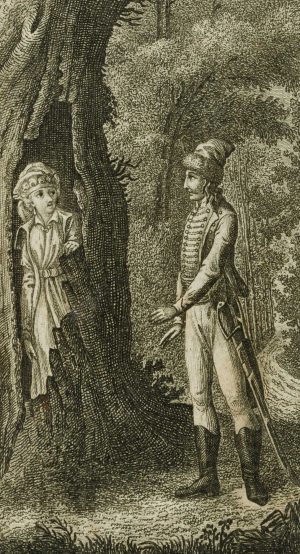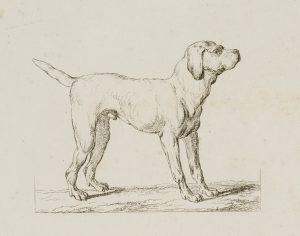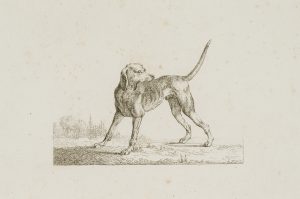Nach Franz von Lenbach (1836 Schrobenhausen – 1904 München), Bildnis Rudolf Virchow, nach einem Gemälde, um 1863, Photogravure
- Technik: Photogravure auf Papier
- Datierung: um 1863
- Beschreibung: Unter der Darstellung signiert und nummeriert “No. 8022”, betitelt sowie bezeichnet “Photographische Gesellschaft in Berlin”. Diese war ein Kunstverlag, gegr. 1862 von Emil und Albert Werckmeister. Gegen Ende des 19. Jahrhunderts leistete die Firma Hervorragendes in der Technik der Heliogravüre. Galeriewerke und zahlreiche Einzelbilder wurden per Kataloge an Kunsthandlungen vertrieben. Die Heliogravüre war ein fotografisches Edeldruckverfahren im Tiefdruck auf gelatinebeschichtete Kupferplatten (ein Vorläufer des späteren Kupfertiefdrucks). Als eine Weiterentwicklung des alten Aquatinta-Verfahrens schon in der ersten Hälfte des 19. Jahrh. begonnen, wurde es mit der Heliogravüre möglich, Fotos und Illustrationen durch ein aufwendiges fotomechanisches Druckverfahren so zu reproduzieren, dass sich echte und sehr differenzierte Halbtöne darstellen und eine ausdrucksstarke plastische Tiefenwirkung des Bildes erzeugen lassen. Mit den technischen Verbesserungen gegen Ende des 19. Jahrh. wurde die Heliogravüre das beherrschende graphische Verfahren insbesondere für anspruchsvolle und künstlerische Photographie und andere Bildvorlagen
- Schlagworte: Porträt, Deutschland, Figürlich, 1850-1899
- Größe: 46,5 cm x 33,5 cm, Darstellung: 25,2 cm x 19,0 cm
- Zustand: Die Darstellung ist frisch erhalten und macht einen tadellosen Eindruck. Das Blatt ist im breiten Rand altersbedingt leicht verfärbt, kleiner Randeinriss an der Oberkante und leicht knickspurig.
English Version:
After Franz von Lenbach (1836 Schrobenhausen – 1904 Munich), Portrait of Rudolf Virchow, after a painting, c. 1863, Photogravure
- Technique: Photogravure on Paper
- Date: c. 1863
- Description: Signed and numbered “No. 8022” below the image, titled and inscribed “Photographische Gesellschaft in Berlin”. This was an art publisher, founded in 1862 by Emil and Albert Werckmeister. Towards the end of the 19th century, the company excelled in the technique of heliogravure. Gallery works and numerous individual pictures were sold by catalogue to art dealers. Heliogravure was a photographic fine art printing process using intaglio printing on gelatin-coated copper plates (a precursor of later copper intaglio printing). As a further development of the old aquatint process already begun in the first half of the 19th century, heliogravure made it possible to reproduce photographs and illustrations by means of a complex photomechanical printing process in such a way that real and very differentiated half-tones could be represented and an expressive plastic depth effect of the image could be created. With the technical improvements towards the end of the 19th century, heliogravure became the dominant graphic process, especially for sophisticated and artistic photography and other image originals.
- Keywords: 19th century, Figurative, Portraits, Germany,
- Size: 46,5 cm x 33,5 cm (18,3 x 13,2 in), Depiction: 25,2 cm x 19,0 cm (9,9 x 7,5 in)
- Condition: The image is freshly preserved and makes a perfect impression. The sheet is slightly discoloured in the wide margin due to its age, small marginal tear at the upper edge and slightly creased.

